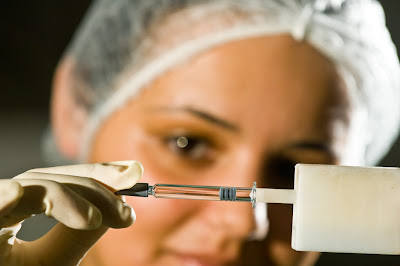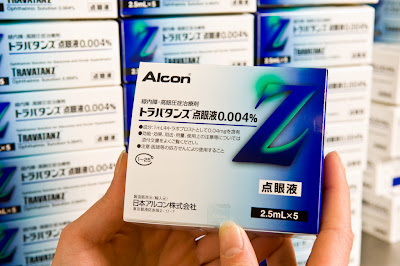Fun with Canadian friends - sailing, celebrating and other wonderful silliness.
Famous last words - "Hold my wine glass and watch me do this..."
Do you download images and video? Manipulate photos? Is content curation part of your marketing strategy? Then you need the info in this session.
Eight years after beginning construciton, we are FINALLY adding the underground garage which will also serve as our wine cellar. Plans include paving the outdoor concrete stairs and patio plus adding an outdoor dining area with pergola off the kitchen. Can't wait for quiet evenings under the stars, sipping wine. Right now construction noises are anything BUT quiet.

Friends and family that have been here in Terzo will recognize that the driveway that ends at our downstairs backdoor now has a giant hole.
The cuckoo bird has arrived and is relentlessly announcing every minute of daylight while the Nightingale sings us a sweet lullaby- all night long. The fireflies are so thick we don’t need to turn on the porch light. And the Dandelions! The world has turned predominately yellow – they pave the roadsides, carpet the vineyards, and brashly wave their yellow heads from even the tiniest cracks in our concrete patio. Far off hillsides covered in dandelions scream ‘look at me and be happy!’ They are overwhelming in their enthusiastic abundance.

Dandelions are one of the hardiest and most dependable wildflowers, growing virtually everywhere on the planet. My sister, Amanda Scardino, used to call dandelions 'blowing flowers'. And yes, I said FLOWER, not WEED.
In Italy, young wild dandelions are picked to use in salads and to make one of my favorite Piemontese specialties, torte verde. But they are not ‘dandy-lions’ here. ‘Dente di leone’, translates to ‘tooth of the lion’. This makes sense if you look closely at the ragged shape of the leaves and also explains why they are sometimes known as ‘denti di cane’ (dog teeth).
Call them anything you want - a dandelion by any other name would still sing spring to me!

Establishing shots such as this skyline view of Tripoli, Libya, work well in either still or video storytelling. Wide shots need a strong foreground element to add punch and perspective, otherwise everything in the frame appears of equal visual value and there is no focal point.
Once upon a time... What a magical phrase! Everyone loves to hear it because they know a story is about to unfold. And everyone loves a story. Stories have been used to teach and influence thoughts and behavior throughout history. Not surprisingly modern studies show that using storytelling as a method of conveying information is much more effective than delivering straightforward facts and/or dry, boring reports. And what is THE most effective, efficient and entertaining form of storytelling? You guessed it, it’s a photo.
But some photographs do a better job of storytelling than others. Below are some tips to help you get your corporate images from ‘once upon a time’, to ‘they lived happily ever after’. Read on.
If you only have room for one image to support your story message, chances are it will be a wide shot. The wide shot is very attractive to the amateur photographer because it’s so easy to simply back up far enough to include the whole scene in the frame. But the wide shot comes with a number of disadvantages. On the plus side it can show everything - all the story elements including people, action and location. But on the negative side - most wide shots are visually boring. With so much included in the frame everything appears equally small and visually unimportant - nothing stands out. This lack of a strong focal point is where wide shots fail to capture viewers’ attention. You can overcome this by placing a large iconic foreground element in the shot and letting the background supply the context and story details. Besides adding depth to the shot, the strong foreground element places the all-important ‘hero’ of the story front and center where it belongs.
With the coming of age of the Flip Camera style recorder, video storytelling and distribution is well within the reach of today’s corporate communicator. But having a video camera and knowing how to push the ‘record’ button does not make you a good videographer any more than knowing how to type makes you a good writer. To do either well takes training, lots of practice - and talent doesn’t hurt either!
Many of the still photo rules regarding good composition and design apply to video as well. If you are new to using video communications, try this simple 1, 2, 3 shot storytelling technique.
1. Establishing shots - set the scene. Generally this is the first thing viewers will see and is used to define the location and scope of the story that follows. Yes, it’s a potentially boring wide shot but with the addition of movement within the frame, visual attention can be held. Establishing shots work best when the camera is tripod mounted - the perceived motion is caused by action within the scene, not by camera movement.

Medium shots are great for showing people in action and interacting with each other. For a video scene like this set up 2 cameras, one on each person. Frame so the heads appear about equal size in both cameras. Having a different view to cut to will keep your video from appearing stagnate and make the piece more interesting to view.
2. Medium shots – carry the action. Positioning the camera 3 to 5 feet from the subject will give you a classic medium shot. This ‘zone’ is where most action sequences and interviews should be shot. Keep the camera on a tripod if you are not good at preventing camera shake. To stabilize your hand-held shots, hold your elbows tight against your sides rather than extending your arms out fully. Once you get comfortable with this technique, try following (tracking) the action. Think of medium shots as the plot of your story. For that reason medium shots should never be stagnate – avoid shots of signage, buildings without activity and intersperse ‘talking head’ and interview footage with b-roll that explains what’s being said.
3. Close up shots – show artistry. I love close ups. Wide and medium shots are the video work-horses, they carry the heavy load of plot and setting. Close-ups are your chance to be creative. By nature close-ups are intimate and personally alluring. Often it is up to the close up shots to supply the atmosphere, personality and mood for the story. It’s your best opportunity to let your personal vision and originality shine forth, so always include close-ups!

Close-ups are your opportunity to express yourself creatively while providing the proper mood for your story. Light your close-ups to match the atmosphere you want the viewer to feel – dark for mysterious; sunny for upbeat; soft for caring/love; bright for techy, etc.
Whether you plan to use stills or video imagery (or combine both) to convey your company’s stories, be sure to shoot all 3 types of shots above. Having this variety of footage and stills at your disposal will make editing easier and your final cut more interesting - assuring a happily ever after ending to your next project.

